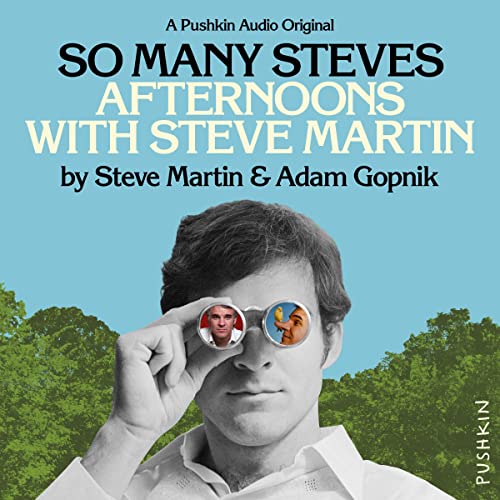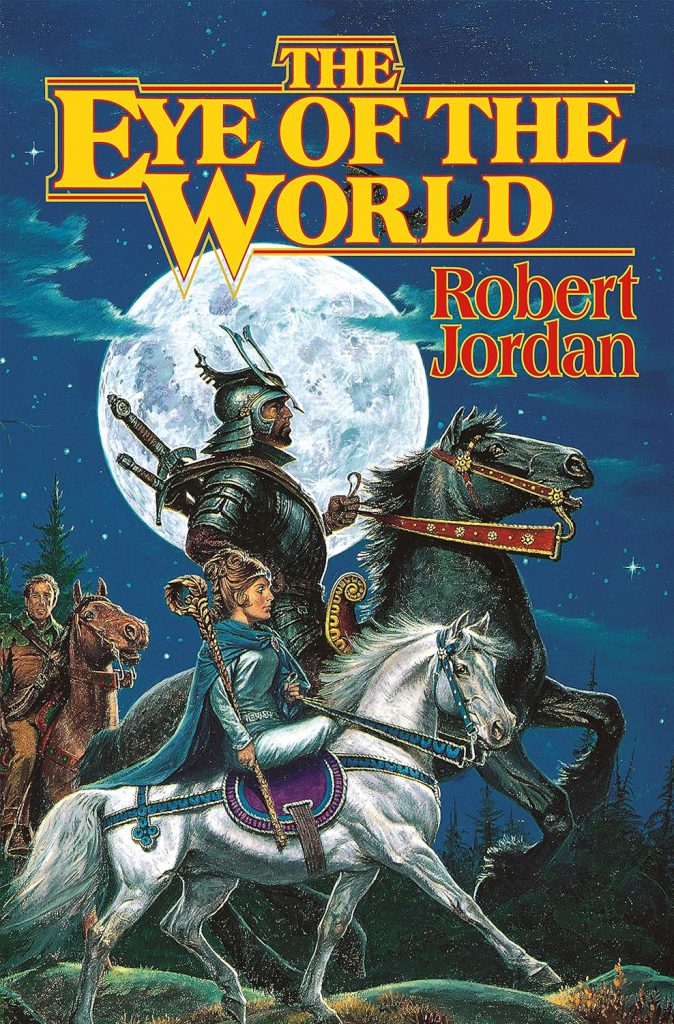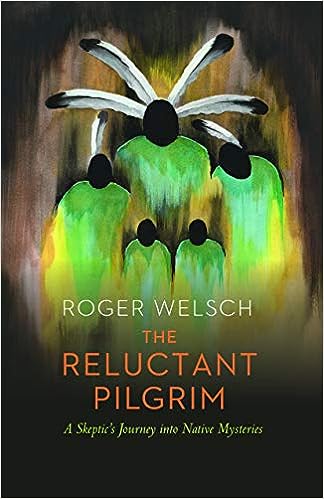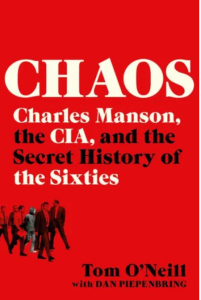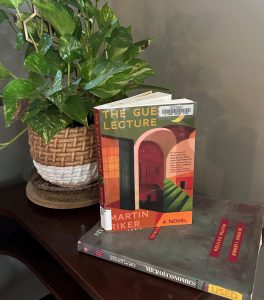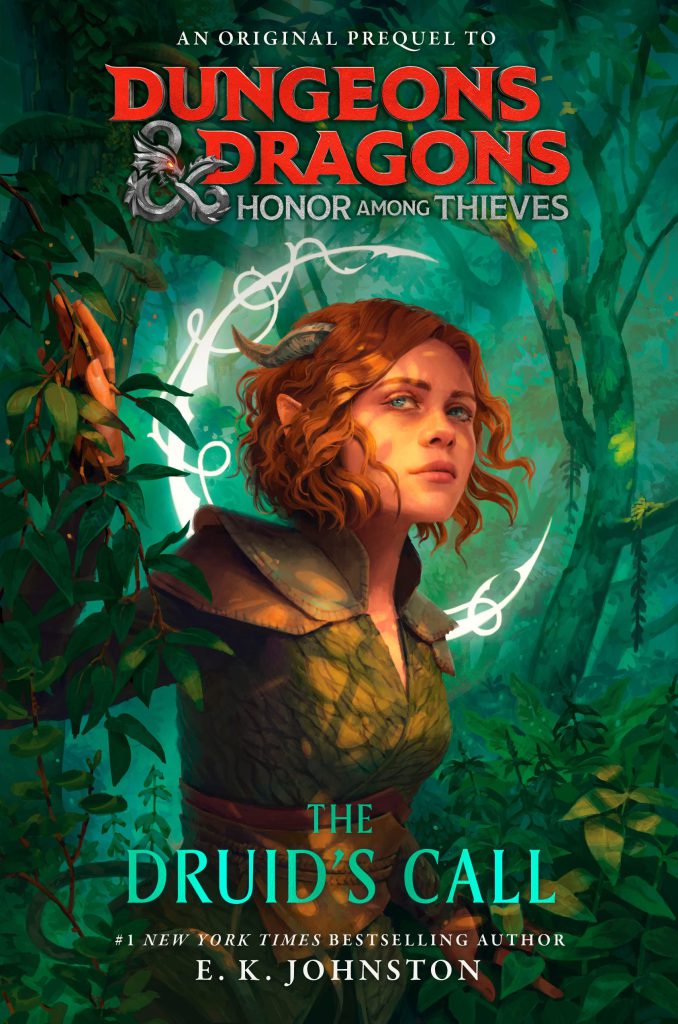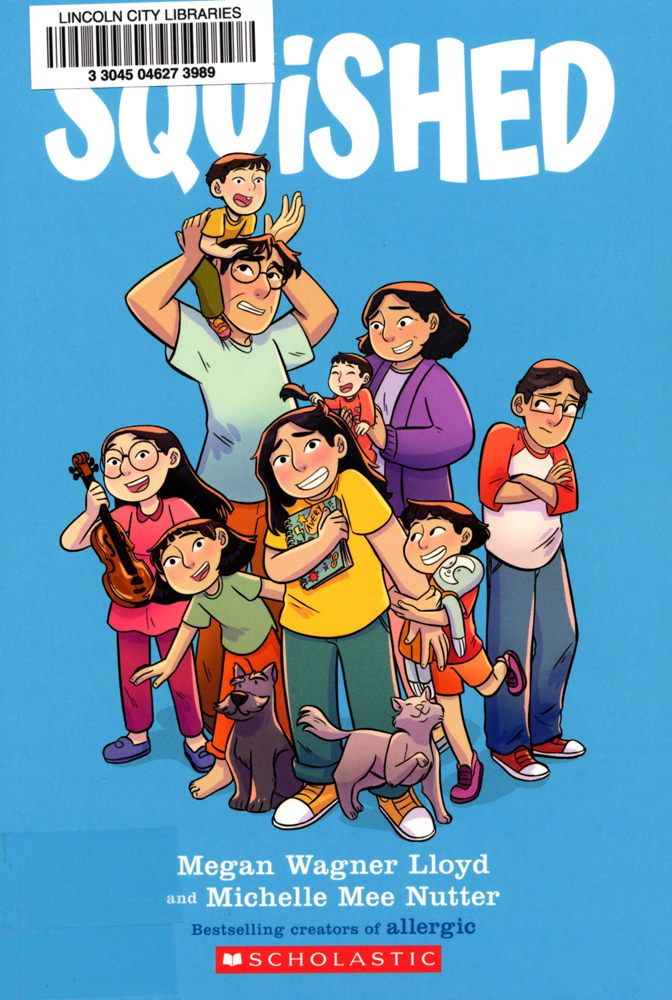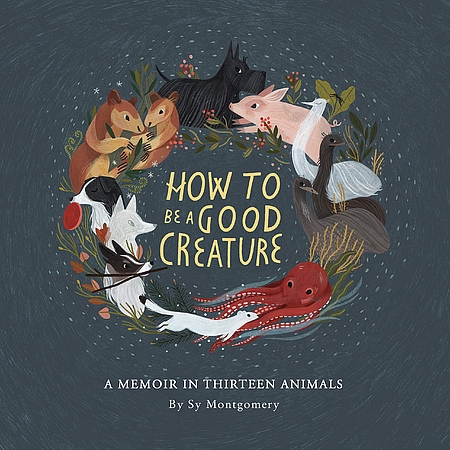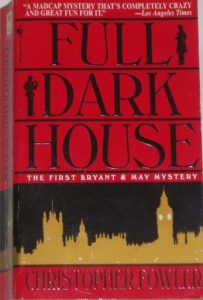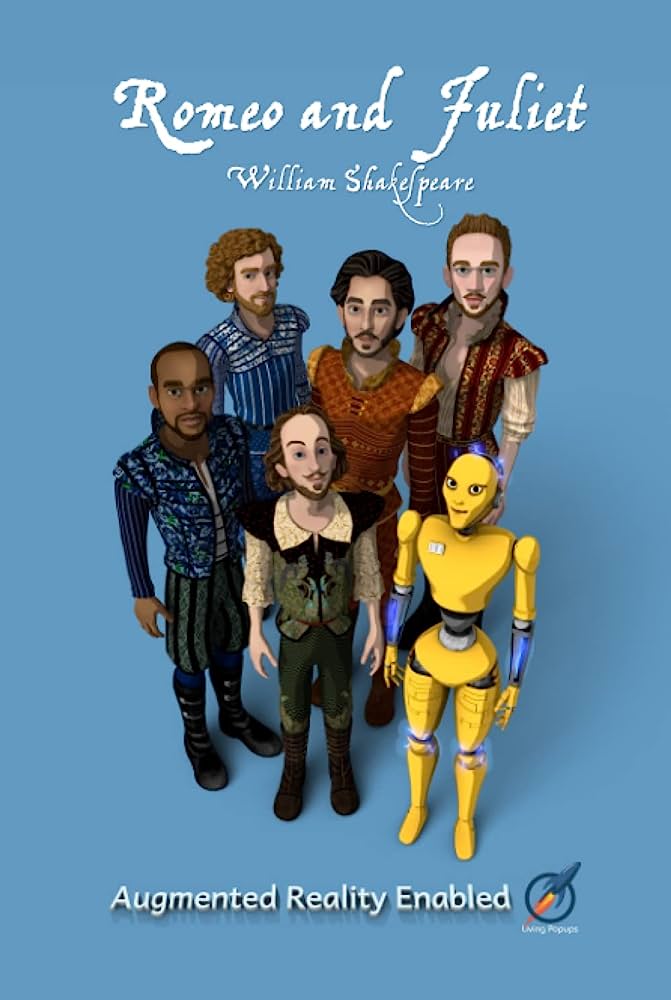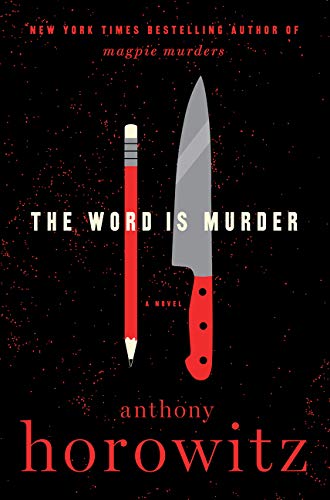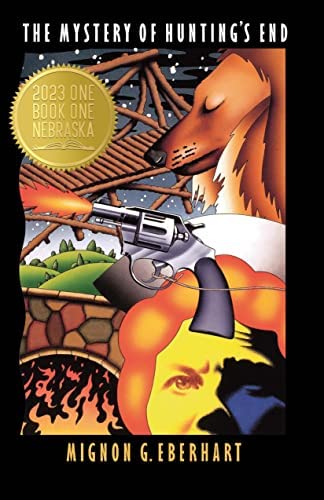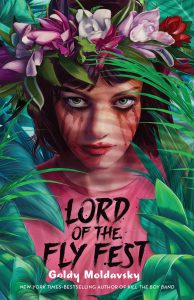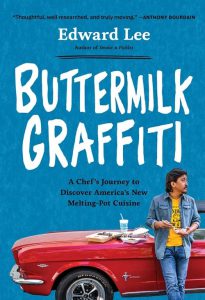Search the Blog
Categories
- Books & Reading
- Broadband Buzz
- Census
- Education & Training
- Friday Reads
- General
- Grants
- Information Resources
- Library Management
- Nebraska Center for the Book
- Nebraska Libraries on the Web
- Nebraska Memories
- Now hiring @ your library
- Preservation
- Pretty Sweet Tech
- Programming
- Public Library Boards of Trustees
- Public Relations
- Talking Book & Braille Service (TBBS)
- Technology
- Uncategorized
- What's Up Doc / Govdocs
- Youth Services
Archives
Subscribe
Tag Archives: Friday Reads
Friday Reads: Ponyboy, Poetry, Kees, and You
I have started reading too many books to write about just one, so for this post, this time, I’m writing about four books. A debut novel with Nebraska connections getting national critical attention, a poet often overlooked in favor of more famous compatriots, another Nebraskan of cinematic mystique, and a brand new non-fiction book about tech that will make you want to put down your phone camera. Let’s go!
Longlisted for a National Book Award, and written by an author born in Nebraska, Eliot Duncan’s Ponyboy is a globetrotting story with a trans, addicted protagonist—but the story is about relationships: between parent and child, within friend groups, and also the relationships we have with ourselves–and with our pasts and our futures. This is the first novel from the Iowa Writers’ Workshop alumnus. More about the book, the author, and recent press can be found at the author’s website .
I recently read about Gabriela Mistral, the first Latin American writer to win the Nobel Prize for Literature in 1945, and I want to read more of her work. I checked out this enormous book, The FSG Book of Twentieth-Century Latin American Poetry, because it shows each work in its original language as well as its translation into English. Being able to read Mistral’s poems in Spanish and English helps me appreciate her intentions and the beauty of her work. Mistral wrote about unexpected things in unpopular ways. You can read some of her work here.
Weldon Kees is a fascinating character, born in Beatrice in 1914. He had a colorful and exciting life in Nebraska and neighboring states, eventually moving to California, where he disappeared in 1955. He produced art in many forms, and also worked as a librarian, among other interesting jobs. After seeing a recent story about new acquisitions related to Weldon Kees at University of Nebraska Libraries, I picked up a used copy of The Ceremony & Other Stories. I am still waiting for the movie of his life. Check this link for a photo from Kees’ diary in 1954 to see a list of books and movies he enjoyed that year.
Your Face Belongs to Us is an important story about what happens when technology moves faster than ethics or the law. Kashmir Hill writes about the tech company that best optimized facial recognition software, and the various motives of the people involved with the project. If you think they don’t have your best interests at heart, you are correct. No matter your opinion of facial recognition software, if you’re interested in the technology and its effects, this is some old-fashioned shoe-leather reporting that will surprise and disturb you.
Duncan, Eliot. 2023. Ponyboy : A Novel First ed. New York NY: W. W. Norton & Company.
Hill, Kashmir. 2023. Your Face Belongs to Us : A Secretive Startup’s Quest to End Privacy As We Know It First ed. New York: Random House an imprint of Penguin Random House LLC.
Kees, Weldon and Dana Gioia (ed.). 1984. The Ceremony & Other Stories. Port Townsend Wash: Graywolf Press.
Stavans, Ilan. 2011. The FSG Book of Twentieth-Century Latin American Poetry : An Anthology. 1st ed. New York: Farrar Straus Giroux.
Friday Reads: So Many Steves: Afternoons with Steve Martin by Steve Martin and Adam Gopnik
This is another Friday listens as this title is only available in audio format. Published by Pushkin Audio (co-founded by Jacob Weisberg and Malcolm Gladwell) — “Pushkin audiobooks are not your typical author-in-front-of-a-microphone productions. They are immersive — you hear the actual voices of the people being interviewed, archival footage, and beautiful scoring.” I’ve been a Steve Martin fan since his white-suit and arrow-through-the-head days. His SNL skits from Dancing in the Dark with with Gilda Radner to the Festruck Brothers with Dan Ackroyd were legend. Years ago, he loaned a piece of art from his collection for an exhibit in the Sheldon Museum of Art and I often sat and watched it after my campus walks. The proximity was oddly thrilling.
This audio-biography is a series of conversations recorded over the course of a year between Steve and long-time friend Adam Gopnik. The two met in the fall of 1990 at a controversial exhibit Gopnik curated called High and Low: Modern Art and Popular Culture at the Museum of Modern Art. They shared many conversations since that time and decided to record Adam, asking questions about Steve’s evolution in both his personal and professional life. The topics cover Steve as magician, standup comic, actor, writer, playwright, musician, composer, and art collector. Hence the title, So Many Steves, that was inspired by a poem written by e.e. cummings, So Many Selves.
I saved this book to listen to on the morning of my birthday while I walked. I learned that Steve used Carl Reiner as a personality mentor watching and studying Carl’s ease with people in conversation employing deft humor. When Tommy Smothers said that “talking to Steve Martin is like sitting in a room alone” – you understand, Steve knew he needed help overcoming his off stage social ineptitude. The best takeaway was Steve reflecting on his life in the late 80s at a time when he began trusting his craft and wondering what was different. There was a Hungarian word for this, Pihentagyú, which means “a relaxed brain.” It describes a quick-witted person who can come up with sophisticated jokes or solutions because their mind is at rest. With a relaxed brain, it is easier to think quickly and clearly. I would credit this to both age and experience, so listening to this while marking another year was especially meaningful.
Of course, I understand the value of print, and I am a long time audio book listener, but these hybrid audio presentations are exactly what I want from an author and performer. A conversational narrative accompanied with a specific soundtrack relevant to the story. If this sounds like your kind of thing, check out Miracle and Wonder: Conversations with Paul Simon, a finalist for the 2023 audiobook of the year. Audible’s Words+Music recordings with over 35 notable musicians are also something to consider. There’s no shortage of ways to delight your aural senses.
Steve Martin and Adam Gopnik So Many Steves: Afternoons with Steve Martin. Pushkin Industries. 2023.
Friday Reads: “The Wheel of Time Series” by Robert Jordan
I’ve been reading this series since I was a freshman in high school, and by then the first books were almost 15 years old, so you know they pass the test of time. I’ve been reading and rereading this series off and on ever since. It’s one of my favorite fantasy series, full of flawed characters, adventure, love stories, and tragedies. The first book in the series is The Eye of the World, It follows a group of young adults, childhood friends, as they’re pulled out of the comfortable small village they’ve always known and thrown into a fight between good and evil and the possible destruction of the world as they know it. It’s a long series, 14 books, and Lincoln City Libraries and Nebraska Overdrive Libraries both have all of them in eBook and Audiobook format available on Libby. If you were a fan of Game of Thrones with its multiple character story lines and young heroes and heroines, this is a great series for you. Prime Video came out with a TV series last year, and while I enjoyed it, I will always urge someone to read the books. They are infinitely better.
Jordan, Robert. The Eye of the World. Tor Books. 1990.
Posted in Books & Reading, General
Tagged A Hawthorne and Horowitz Mystery, Anthony Horowitz, Book Review, Friday Reads, mystery, Reading, series, The Word is Murder
1 Comment
Friday Reads: The Reluctant Pilgrim by Roger Welsch
Roger Welsch’s The Reluctant Pilgrim is a curious and relatable book, a book of inter-connected stories from Welsch’s forty-year exploration of Native American community and spirituality. Known for his humor, this is not a book of humor. It is a thoughtful reflection on personal experiences and associations as an adopted member of the Omaha Tribe. Welsch’s journey expounds on the unexplainable, mysterious, the physical – round stones, eagle feathers, buffalo skulls, coyotes, and crows. In short, a phrase he repeats often “Something Is Going On.” Throughout, Welsch shares the inspiration and wisdom he experiences in his many associations with Native American communities, Native elders, ceremonies, and nature.
I confess to reading only this book among the forty plus Welsch wrote over many years. I do have several on the bookshelf and I look forward to reading them. Like many others, I’ve enjoyed Welsch’s public presentations. Storytelling was his special gift whether as a speaker or as a writer. His humor is notable but his generosity, perspective, wisdom, and devotion to the stories of the Great Plains stands out as truly remarkable.
Welsch left a tenured professorship at the University of Nebraska-Lincoln to move with his family to a small 60-acre property near Dannebrog, Nebraska. From there he intended to pursue a writing and speaking career – and that he did. Like many, I remember Roger Welsch’s twelve plus years as a correspondent presenting his biweekly “Postcards From Nebraska” on CBS News Sunday Morning.
It’s interesting that Roger Welsch, the recognized dean of storytellers, has a nearly uncountable number of stories about his own life that have become a part of our folklore. His interests were eclectic. He developed an interest in tractors and wrote about them. I gave away Busted Tractors and Rusty Knuckles to a farmer family member. Welsch founded the Liars Hall of Fame and he served on his county’s weed-control board to be a voice for preserving native grasses and other plants.
Others who have written about Welsch’s books recommend that The Reluctant Pilgrim be read with his earlier book, Touching the Fire.
Roger Welsch. The Reluctant Pilgrim: A Skeptic’s Journey into Native Mysteries. Lincoln: University of Nebraska Press. 2015.
Friday Reads: Educated by Tara Westover
As a relatively new Nebraska Library Commission employee, I have thoroughly enjoyed learning about the various collections at the Commission, including the impressive book club kits. I’m always curious to see what is being shipped out to libraries across the state on any given week. Knowing my interest in non-fiction, my colleague pointed one of the memoirs in the book club kits: Educated, by Tara Westover. It was not yet on my Libby wish list, so I had to add it, and I later listened to it as an audiobook.
Tara Westover was raised by a fundamentalist Mormon family in rural Idaho. Her parents coached their children to say they were “homeschooled” if anyone inquired, but in reality Tara spent most of her childhood working alongside her father and brothers in the family scrapyard. Her parents were suspicious of many things in the world outside their secluded family. They rejected formal education and modern medicine, preferring to rely on faith and homeopathy. Her father was obsessed with preparing for the end of times, and compulsively stockpiled food and supplies. He distrusted everything about the government and chastised most outsiders as socialists who were influenced by the Illuminati.
Tara’s childhood was filled with fear and sadness. She experienced horrific violence, shaming, and threats from an older brother. The family culture taught that women should be submissive and modest, and she was frequently shamed or witnessed the shaming of other women. But Tara was also inspired to learn and to leave. She decided to follow in the footsteps of an older brother who was self-motivated to study, take the ACT, and go to college.
Tara’s challenges did not disappear after enrolling at BYU at the age of seventeen. Much of the book deals with her collegiate life and self-discovery. Tara’s journey had many ups and downs as she navigated a world she was unfamiliar with, and she dealt with a lot of push and pull from her family, who disputed her claims of abuse. They have continued to disagree with her perspectives, and her mother later published a book of her own.
Educated covers a lot of heavy topics including abuse, mental illness, and many layers of family trauma. But it is also a story about self-discovery, belonging, and finding a voice, which many readers will likely connect with. Educators and those who work with youth may find inspiration in the power of mentoring those without family support to find opportunities and strive to do the big things they never imagined they could do. Larger themes of facing fears and finding strength also run through the book. One of my favorite things Tara discovers is “books were not tricks and I was not feeble.”
Westover, Tara. Educated. Random House, 2018.
Friday Reads: Chaos: Charles Manson, the CIA, and the Secret History of the Sixties
The subject matter in Chaos explores many of the general goings on in the 60’s and 70’s, and a few specific ones. Tom O’Neill begins this journey by examining (with a fresh lens independent of Vincent Bugliosi’s Helter Skelter), the Mason murders and leads to the CIA, government cover-ups, frauds, and numerous examples of “this doesn’t look right”. It would be easy to dismiss all of what O’Neill writes about as conspiracy. I’m certain that some will, without even reading his reporting, but doing so would be a closed minded disservice to understanding important facets of what he explores. Speaking of conspiracy, we live in times where discourse, discussion, and debate are largely dead. Instead, we have labels and zero substance – quick one-liners (often labels) that grab attention and fit our societal mentality of the short or non-existent attention span of citizens. This is consistent with the omnipresent cell phone mentality – use of the phone between sets at the gym, use of the phone during in-person meetings whilst someone else is speaking, and even the use of the phone between writing sentences. It should be noted that the book’s title – Chaos, is a reference to the CIA’s domestic espionage program from 1967 to 1974, encompassing numerous government activities.
Chaos starts with this fresh look at the Manson murders, challenging Bugliosi’s Helter Skelter theories. While O’Neill doesn’t purport to have all the answers or a smoking gun, he illustrates, often from public records and interviews, many inconsistencies in the official narratives. Whether related or unrelated, O’Neill uncovers facets of the CIA’s involvement in a number of things that oddly intersect the Manson players, notably its CHAOS and MK-ULTRA programs. Undoubtedly, the CIA was running in the same circles as the Manson family (as was Hollywood), and O’Neill aptly sums up his conclusion that things did not smell right:
“So when I plunged into their stories with Manson and found evidence of serial dishonesty—again, often connected to federal law enforcement and intelligence agencies—I had to ask myself if I was crazy to be doing all of this.”
This book is relatively long, at 528 pages. O’Neill’s contract was cancelled by the original publisher and sustained threats of lawsuits and smears from Bugliosi, but eventually published after O’Neill’s long period of research. An apt summation can be found in O’Neill’s Epilogue:
“My goal isn’t to say what did happen—it’s to prove that the official story didn’t.”
I imagine that since so much time has elapsed between the events described by O’Neill in Chaos and the current day, much of what he writes will be largely ignored. Likely, had this book been written closer to the Manson murders, O’Neill would probably be smeared under the umbrella of something like the Martha Mitchell effect. Doing so would largely be a mistake that seeks to erase important facets of American history, albeit unflattering to law enforcement and the CIA.
O’Neill, Tom and Piepenbring, Dan. CHAOS: Charles Manson, the CIA, and the Secret History of the Sixties. New York, Little, Brown and Company. 2019.
Friday Reads: The Guest Lecture by Martin Riker
If stream-of-consciousness writing, existential dread, and fun facts about 1930’s economic theory are your jam, you are in for a treat.
When Abby accepted the invitation to give a guest lecture on the economic optimism of John Maynard Keynes, she was full of that rose-colored confidence herself – a published academic on her way to securing tenure at a prestigious university, secure in her marriage, renovated home, and promising career.
Now, the night before the speaking engagement, she lies awake in her shabby hotel room, unable to sleep and burdened with self-doubt. Her entire world upended, she has been denied tenure, her book on Keynes declared derivative, and imposter syndrome looms large. Woefully unprepared for her talk, she attempts to silently rehearse while her family slumbers. With an imaginary Keynes keeping her company, she mentally wanders the rooms of her house while discussing the economist’s predictions and historical relevance. Each room conjures memories of mistakes past, anxiety about current political and environmental crises, and rising panic about her future prospects.
As someone who often has trouble shutting off their brain to drift into dreamland, it was nice to step into someone else’s headspace for a while. I’ll admit, I read well past my bedtime.
Martin Riker. The Guest Lecture. New York, Grove Press, Black Cat, 2023.
Posted in Books & Reading
Tagged books, Friday Reads, literary fiction, Martin Riker, Reading
Leave a comment
Friday Reads: The Druid’s Call by E.K. Johnston
In all good hearts is a spot of darkness, and in all tragedy is a glimmer of light. – back cover quote.
I picked up this novel after watching the new Dungeons & Dragons movie, Honor Among Thieves. I have been playing D&D for almost 20 years, and in my opinion the movie was an accurate representation of a typical campaign. Exciting, fun, and full of unforeseen events and missteps.
The Druid’s Call is a prequel to the movie, telling the origin story of the tiefling, Doric. In the current 5th edition of D&D, tieflings trace their origins to a deal made in ancient times between power hungry humans and devils from the Nine Hells. Now, they look mostly human, but with horns and a tail, reminiscent of their devilish ancestry.
Tiefling ancestry can hide for many generations and as can sometimes happen, Doric was born to human parents who abandoned her as a child, due to her appearance. Doric struggles to find her purpose and even after being taken in and accepted (mostly) by a group of Neverwinter Wood elves, still feels like an outsider. Her best friend, Torrieth, is very supportive of Doric, encouraging her to practice being a ranger, like the other elves. However, they both soon learn that Doric’s abilities are really that of a druid.
As there are no druids in the elven community, Doric must leave the elves and travel to the Emerald Enclave to train as a druid. It is a difficult journey for her, full of adventures and encounters, both good and bad.
In the end, Doric learns to accept her tiefling and druid self so that she can return to her true family, her elven clan, and help protect them from the humans who have started moving deeper into the elves’ woods, destroying the forest as they go.
I was expecting this book to be like the movie, with campy escapades and exciting fight scenes. But, it was much deeper than that, and I truly appreciated how the author delved more into the characters in the book. As a D&D player, I know that The Druid’s Call portrays the Dungeons & Dragons universe accurately. But, you don’t have to know anything about D&D to understand and enjoy this book. (Or the movie.) The author has done a great job of presenting the D&D world so that anyone who likes fantasy, adventure, and an inspiring story will enjoy this book.
Friday Reads: Squished by Megan Wagner Lloyd
A full color graphic novel for tween readers, ages 8-12 or so. Avery (11) the second-oldest of seven children in the loving Lee family, is beginning to feel squished by her siblings. When her older brother is given a room of his own, and her room of two is becoming a room of three, (younger brother Max is moving in with Avery and her sister, Pearl), she prepares a list of reasons she should have her own room, to no avail.
Avery loves her family, she just gets a bit embarrassed and frustrated by them. She also has some good friends who she spends time with – and they share some inside jokes as well.
Now Avery has decided to earn money in order to have a room built for her in the basement. Walking dogs and selling lemonade do not work out well. Then she learns the family may be moving to Oregon for her mother’s new job, and a room of her own is not even an issue anymore. She doesn’t want to move away from her friends and all she knows.
There is plenty going on and readers will relate to Avery’s ups and downs.
Megan Wagner Lloyd. Squished. New York, Graphix, Scholastic Inc., 2023.
Friday Reads: How to be a Good Creature: A Memoir in Thirteen Animals by Sy Montgomery
“‘Tis a fearful thing, to love what death can touch” (Rabbi Chaim Stern, attributed).
I needed a good short read this summer. Sy Montgomery’s How to be a Good Creature — weighing in at just over 200 pages (roughly 3 hours in audio) — fit the bill. I had flagged it for my To Be Read list years ago, when the title and cover first struck me. The faint nod to Mary Oliver’s famous poem, “Wild Geese” likely helped How to be a Good Creature stick in my mind.
Montgomery titles each of her book’s chapters after an animal – or two, or three – who made a significant impact on her life as a writer, as a naturalist, and as a human being. I especially enjoyed her focus on the uncommon, harder-to-love animals: the bird-eating spider, the tarantula, the octopus. I myself am committed to the lifelong learning experience of being my own good creature, which has manifested as of late in the hair-raising rescue of insects who have found their ways into my spaces through no fault of their own.
At the heart of Montgomery’s book are the border collies with whom she has shared her life: Tess, Sally, and Thurber. Each border collie appeared exactly when they were needed — an experience I share with many of the dogs who have accompanied my own life. Beside them, a pig named Christopher Hogwood. Rescued as a tiny piglet, Chris grew into a 700lb gentle giant.
As I write this, processing the book in its entire, I realize that what irritated me the most about How to be a Good Creature was that far too often the book swung between sneak-preview and overt advertisement for Montgomery’s other adult nonfiction books: The Soul of an Octopus (2015) and The Good Good Pig: The Extraordinary Life of Christopher Hogwood (2006). I got what I could ask for from a short, quick read, but if I had to pick up another one of her books for my introduction to Montgomery, I think I would have picked one of these two instead.
Montgomery loves her animals, despite most of them being long gone from this earth. That’s fine — in fact, that’s great, because (to quote an excellent movie) “Death cannot stop true love.” We humans are so much longer-lived than the animals who join us on our journeys; to be an animal lover is to put a layaway on grief. However, the significant amount of woo-woo (an informal term for what I felt was a mystical and anthropomorphic perspective taken too far) and Montgomery’s wild mood-swings (which would have been better balanced if the book had been single-minded and significantly longer) detracted from my overall enjoyment of an otherwise poignant book.
While I do not believe that Montgomery lived up to her thesis, I did find value in my read. In one of her shortest chapters, “The Christmas Weasel,” Montgomery recounts the story of the time an ermine (a sleek weasel-like animal), who killed one of her beloved hens at Christmastime. What it sorely lacks in stature and size, the ermine makes up for in ferocity and confidence. When Montgomery takes the body of her hen, the little weasel charges at her, enraged at the loss of a good and necessary meal. There’s a wealth of commentary here: the blameless act of an animal doing what an animal must do, humanity’s constant and futile battle to remain separate from nature, and the inseparable nature of life and death.
Sy Montgomery narrates the audiobook, and in my research of her biography, I learned that she was a radio commentator. Her narration is crisp and even, (mostly) properly emotive, and overall well-done. Her performance played out at just the right tempo for an afternoon of sewing.
Sy Montgomery, and Rebecca Green. How to Be a Good Creature : A Memoir in Thirteen Animals. Boston, Houghton Mifflin Harcourt, 2018.
Friday reads: Full Dark House, by Christopher Fowler
I noticed among the new titles shown at the library, the latest Bryant and May, Peculiar Crimes Unit title was out. So, instead of picking it up, I went and started at the beginning. The first title in the series is Full Dark House, by Christopher Fowler. When he launched the series he had 10 literary titles, and over 100 short stories written, according to reviewer, Joe Hartlaub, of Bookreporter.com, who describes Christopher Fowler’s writing as quirky, and in Full Dark House “There are elements of mystery (ala Conan Doyle and Agatha Christie), police procedurals, horror, history and suspense aplenty here.” It is one of the best, most atmospheric stories about the bombing of London during World War II, and the citizen’s response to it, I’ve ever read. It made me feel the terror and unease of everyday life at that time. Fowler also laces it with the humor, sometimes dark, such as is often found in the TV British detective series “Midsomer Murders” as well as the odd murders, and strange motives for murder.
Two stories run beside each other, the bombing of the unit in the present day, and the murders that brought eccentric Arthur Bryant and scientific John May, together in Nov, of 1940, when they were 22 and 19. Bryant was doing research on his memoir, reading notes about the case, and had gone to the nursing facility where the last person living concerned in the events of 1940 resided. Bryant often stayed at the office overnight, so when the office exploded in the dark of early morning 2003, and a body is found there, it is presumed his.
The case in 1940 involves deaths in a theater in London called the Palace, and a controversial, intentionally risqué, production of Orpheus in Hell, by Jacque Offenbach. The production is set to run all during the war, as a distraction from the horrors, ostensibly, and produced by a Greek Shipping Tycoon. The most puzzling thing about the murders is the lack of evidence, and the lack of motive.
There is atmosphere in both timelines, but especially the World War II scenes of London with details like “Get you home” booths, that I’d never heard of before, to help citizens find their way home among bombed out streets, after the all clear had been blown. Reminders of black out curtains, and cross tapping on windows, to reduce flying glass from bombing enhance the atmosphere. The current timeline shows how much time has elapsed for the detectives, the changes in the city, and the grieving of the remaining staff of the unit, plus the state of gang relations in 2003 in London.
This is not a cozy mystery, but, it is intriguing, well written, and, yes, quirky. The Peculiar Crimes Unit continues on, with the two oddly matched detectives far past retirement age, solving murders in unusual ways. I admit, I’m on my third story, the fourth in the series.
Full Dark House, by Christopher Fowler, a Bryant and May Mystery, C 2003, A Bantam Book, Doubleday UK hardcover ed.,
Next in series is The Water Room
#FridayReads Romeo & Juliet… with a Robot?
Shakespeare has a robot now. She’s yellow, humanoid and kind of sassy as she introduces each scene in this revamped Romeo and Juliet.
Did I mention she actually walks around the page and talks to Shakespeare on occasion? I wish I could say you will open Living Popup’s magical book and she just appears like a Star Wars-esque hologram on the page, but we’re just not there yet. This book is Augmented Reality (AR) Enabled, which means you download an app on your phone, point your camera at illustrations in the book, and the scene unfolds on your screen.I had so much fun with this book at the ALA conference that I got a little giddy and bought it on the spot. I’m a big kid now, but Living Popups actually made me like Shakespeare. If I had had this version as a teenager, my eyes wouldn’t have glazed over while being forced to analyze every turn of phrase back in the day. But fear not! The original Shakespearean text remains untouched, just formatted more like a modern movie script than the version with tiny font that was inflicted upon me. I’m replacing my obligatory Shakespeare collection with the AR version immediately.
The AR illustrations appear at the start of every act and scene. We all know the themes, character development, and lessons learned from Shakespeare are timeless. The robot is another fun way to bridge the gap from the old, unfamiliar language to the new world. Unlike my Shakespeare professor in college who seemed determined to make me memorize passages, the AR robot jumps in to explain the setting, little parts of history, and important plot points in a way that actually makes sense. And doesn’t make me want to take a nap.
It was also fun to see a robot have a conversation with Shakespeare to ask him what in the world he was thinking, writing a play about two dying teenagers. I paraphrase, but you get the idea. Robot gets real. If you want to make Shakespeare interesting, but still stay true to the original text, the robot can help. It’s better than sitting down and watching the Leo DiCaprio movie again. Though that is an undeniable classic. I own the soundtrack. It couldn’t hurt to do both? I digress.
Living Popups makes a little quartet of robot-ified Shakespeare books, some Boxcar Children books, Animal Farm, Legend of Sleepy Hollow, and a growing collection of books for Elementary to Middle school students. The AR scenes are actually good, with voice acting and everything.
Give Living Popups a try if you want to see the future of books.
Friday Reads — Atlas : The Story of Pa Salt, by Lucinda Riley and Harry Whittaker
Earlier this year, I read and did a Friday Reads post about The Seven Sisters series by Lucinda Riley. Atlas : The Story of Pa Salt is the 8th book in that series, released in May of this year after a two-year gap, and let me tell you, it was worth the wait! Sadly, Lucinda Riley died of oesophageal cancer in 2021, and her son, Harry Whittaker, completed this final book in the series. And once again, it does not disappoint. Spanning a lifetime of love and loss, crossing borders and oceans, Atlas: The Story of Pa Salt, draws Lucinda Riley’s saga to its stunning, unforgettable conclusion. I listened to the audio version and was amazed at how masterfully all of the pieces of the seven previous books came together. I won’t say more, because to do so would give away too much, but trust me when I say–this book was a non-stop page-turner!
1928, Paris. A boy is found, moments from death, and taken in by a kindly family. Gentle, precocious, talented, he flourishes in his new home, and the family show him a life he hadn’t dreamed possible. But he refuses to speak a word about who he really is.
As he grows into a young man, falling in love and taking classes at the prestigious Conservatoire de Paris, he can almost forget the terrors of his past, or the promise he has vowed to keep. But across Europe an evil is rising, and no-one’s safety is certain. In his heart, he knows the time will come when he must flee once more.
2008, the Aegean. The seven sisters are gathered together for the first time, on board the Titan, to say a final goodbye to the enigmatic father they loved so dearly.
To the surprise of everyone, it is the missing sister who Pa Salt has chosen to entrust with the clue to their pasts. But for every truth revealed, another question emerges. The sisters must confront the idea that their adored father was someone they barely knew. And even more shockingly: that these long-buried secrets may still have consequences for them today. In this epic conclusion to the Seven Sisters series, everything will be revealed! [Audible]
Friday Reads: Legends and Lattes by Travis Baldree
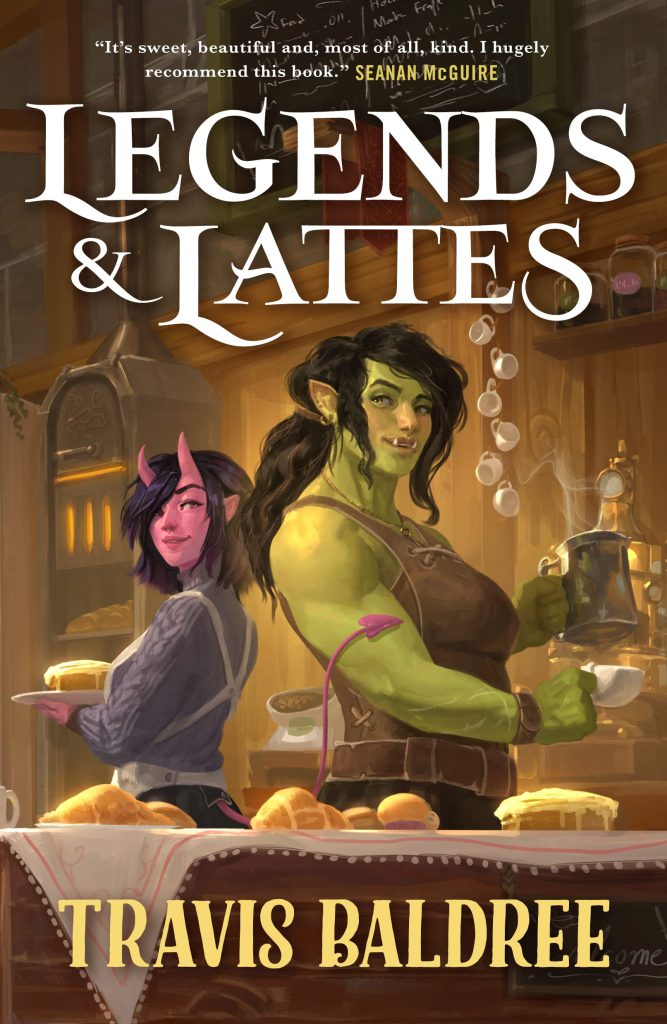
“A novel of high fantasy…and low stakes”
Viv, an Orc Barbarian, is ready to put her mercenary days behind her and hang up her sword for good. Her travels have led her to Thune, where she hopes to open the very first coffee shop in the city (where no one even knows what coffee is).
However, opening a new business alone with just a vague plan proves difficult, even with the help of a magic fortune stone. Old “friends” showing up and Thune’s own dark streets aren’t helping anything either. She’ll need to rely on new friends and partners in order to build this new quiet life of good food and delicious coffee that lasts.
“People just sat around drinking it from these little ceramic cups, and I had to try it, and… it was like drinking the feeling of being peaceful. Being peaceful in your mind. Well, not if you have too much, then it’s something else.
This book is all about found family, the importance of building a community and sense of belonging, and self-reinvention. The process may be difficult, but so worth it. It’s a great slice-of-life sort of story when you need something cozy and heartwarming with some loveable characters (plus some cinnamon rolls and giant cats).
“The combined aromas of hot cinnamon, ground coffee, and sweet cardamom intoxicated her, and as she brewed and smiled and served and chatted, a deep contentment welled up. It was a glowing warmth she’d never experienced before, and she liked it. She liked it a great deal.”
A prequel story, Bookshops & Bonedust, should be out in November 2023.
Baldree, Travis. Legends & Lattes. Cryptid Press, 2022.
Friday Reads: This Is How You Lose the Time War, by Amal El-Mohtar and Max Gladstone
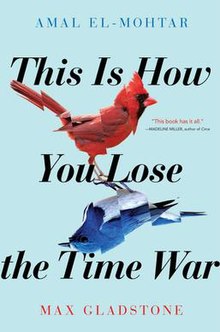
This Is How You Lose the Time War came out in 2019 and won several awards, but there was a resurgence of interest in the novella last month, when the book was a main character on a social media platform for a few days. Suddenly it was sold out everywhere, and libraries that had it in their collections were racking up long reserves lists on it. I’m here to tell you that this book lives up to the hype. Any time is a good time to pick up a good book—when it’s new, when it’s old, when it’s neglected, when it’s all the rage.
This time-traveling, epistolary novella is written by Amal El-Mothar and Max Gladstone. Each author wrote the letters of one character, who was writing to the other character, written by the other author. They had agreed to a general storyline before they started writing the letters to each other’s characters, but each author found the tale grew, delightfully, in the collaborative process.
This Is How You Lose the Time War is a quick and dazzling read, and it’s best if you know as little as possible before you start in on it. It won a Hugo Award in 2020, and a Nebula Award in 2019, and a British Science Fiction Award in 2019 as well. And it’s one of the social media “It” books of 2023. Everyone seems to like it—chances are good you might enjoy it, too.
El-Mohtar Amal and Max Gladstone. This Is How You Lose the Time War. First ed. Saga Press an Imprint of Simon & Schuster 2019.
Friday Reads: The Other Side of the Coin: The Queen, the Dresser and the Wardrobe by Angela Kelly
Judging a book by its cover is one way to select what to read but I have often judged an audio book by its length. Five hours is perfect for a palette cleanser in between longer tomes. Such is the case with this book. Also recommending this selection was the phrase: “fully endorsed by Queen Elizabeth II.” Lastly, the author narrated her book and while this can sometimes be a drawback, Angela, a Liverpudlian, who is conscientious of her accent, spends some time in the book discussing her desire for elocution lessons. The Queen herself takes on this task and this memorable conversation shows the kind of friendship she enjoyed with Her Majesty. Kelly’s slow and precise storytelling reveal her character in a way nothing else could.
Dressing the queen is, as you can imagine, a time laden and rigorous job. Protocol, tradition, regalia, weather, and every kind of unexpected condition you can imagine, make this job rife with problems to solve. Angela began her position as Personal Assistant and Senior Dresser in 1993 and moved on to increasingly more important and intimate tasks until the Queen’s death in 2022. Working with a battalion of milliners, jewelers, perfectly sighted seamstresses, and other palace staff, she shares various wardrobe stories that are quite charming.
For example, did Her Majesty break in brand new shoes? No, Angela, being the same size broke them in for her. And when a hat was hastily shipped for an occasion without being checked or tailored, Angela unpacked it knowing that it wouldn’t flatter Her Majesty and came up with the brilliant solution for her to wear it backwards. When Prince Philip agreed, the Queen acquiesced and it was a success to everyone but perhaps the milliner. How to clean jewelry at the last minute? Gin and water of course. According to Angela, one of the Queen’s secret wishes was to have her photograph taken more casually with her hands in her pockets. Angela created an opportunity and designed a dress for this to happen. The Queen’s face says it all.
Unfortunately, I went looking for the back-story on Angela. To no one’s surprise, the new King evicted her from her semi-detached grace-and-favour cottage. There is speculation that Angela was set to write another book about the queen. Perhaps her royally financed new home, not so close to London, came with a signed agreement to say no more.
After hearing Angela’s story, I can categorically say, this is a job I would not want. Yet, I found it interesting to hear from someone inside the palace who was given permission to share her story.
Kelly, Angela. (2019). The Other Side of the Coin: The Queen, the Dresser and the Wardrobe. Harper.
Friday Reads: “The Word is Murder: A Novel” by Anthony Horowitz
Anthony Horowitz is the author of over forty-five novels, including the Magpie Murders Series which has been made into a BBC TV series. He’s also a writer for BBC Television including series like Midsomer Murders and Foyle’s War. Horowitz has written this new semi-autobiographical murder mystery series as a new spin off on the Sherlock Holmes and Watson partner dynamics.
Writing himself into the book as the one of the main characters, Anthony Horowitz is a TV writer and author living his life in London when he’s approached by private detective and police consultant Daniel Hawthorne, with the proposition to write about his interesting cases for a new book series. In a very Holmes like way, Hawthorne is brilliant with his deductions but has a personality that is hard to like.
Hawthorne comes with a case, Diana Cowper, the mother of a famous actor with a troubled past has been murdered in her own home, the day before she visited a mortuary to make her own funeral arrangements. As if she knew what was coming or even planned it herself. This unlikely duo will investigate the case together, Horowitz will follow all the twists and turns of the case with Hawthorne leading the way.
The Word is Murder is the first novel in the Hawthorne and Horowitz Mystery Series. There are now three books in the series, including The Sentence is Death and A Line to Kill.
Horowitz, Anthony. The Word is Murder: A Novel. Harper.2018.
Friday Reads: The Mystery of Hunting’s End by Mignon Eberhart
The Mystery of Hunting’s End is this year’s selection for the One Book One Nebraska program. Published in 1930, Mignon Eberhart chose the Nebraska Sandhills region near Valentine for the remote setting of this mystery novel. Hunting’s End is a lodge owned by the wealthy Kingery family. There, a small and curious group comes together by invitation, the same group present five years earlier when a death occurred. Was it by a heart attack or was it murder?
The Nebraska Sandhills, where Mignon G. Eberhart lived as a newlywed, inspired the setting of this mystery. Matil Kingery’s intent in this reunion is to discover which one of her guests murdered her father.
Posing as another guest is detective Lance O’Leary. At his recommendation, Matil has arranged for Nurse Sarah Keate to care for Aunt Lucy Kingery at Hunting’s End – a challenging assignment, as it turns out. Keate is a perceptive and persistent sleuth and an able O’Leary ally. Nurse Keate has a recurring presence in Eberhart’s novels.
Gathered together at the lodge, the guests are sealed from the outside by a November snowstorm. A dog named Jericho lurks about, and a stray cat is curiously present for each discovery of a new death.
This book keeps the reader guessing as to who is behind the murders at Hunting’s End. Why were these murders committed and who is the killer? The reader will be alert to clues leading to the identity of the guilty party.
I found The Mystery of Hunting’s End to be an enjoyable and fun read. It is true to a good mystery book – colorful characters and a plot that continues to surprise and keep the reader guessing – who did it?
Mignon Eberhart was a prolific writer, one of the most popular mystery writers of her time with a career spanning from the 1920s to the 1980s. Eberhart published over 50 novels and numerous short stories during her career, and with several adapted for film and television. The 1938 movie, Mystery House, is based on The Mystery of Hunting’s End. Eberhart received the Grand Master Award from the Mystery Writers of America and was a past president of the Mystery Writers of America.
For more about Mignon Eberhart, read Nebraska Wesleyan University Professor Rick Cypert’s America’s Agatha Christie: Mignon Good Eberhart, Her Life and Works. Cypert contributed discussion questions for The Mystery of Hunting’s End. Discussion questions can be found on the Nebraska Library Commission website.
Mignon G. Eberhart. The Mystery of Hunting’s End. Lincoln: University of Nebraska Press. 1998. ©1930.
Friday Reads: Lord of the Fly Fest by Goldy Moldavsky
What would happen if you lured all the Instagram beauty influencers to a tropical island with the promise of music, luxury accommodations, and access to other beautiful people… and then left them stranded without food, electricity, and gasp, WiFi? Small-time podcaster Rafi Francisco is about to find out. Shelling out her meager life savings for a ticket to the Fly Fest, an exclusive island festival where she hopes to score a chance to dig up some dirt on a famous performer, Rafi instead finds herself stuck on the beach with a bunch of spoiled and increasingly dirty trust-fund kids who have mistaken her for staff. But there is no staff. No staff, no gourmet meals, no private villas, no music festival…and no way to get in touch with anyone off the island that can rescue them.
If this sounds a lot like a recent island festival scandal that resulted in fraud charges and felony convictions, you are not mistaken. Described as “Lord of the Flies meets Fyre Festival” the setup is not as unlikely as you’d hope.
Rafi recognizes that the situation will quickly become dire and tries to rally the festival-goers into working together to find food and shelter, while still trying to secretly investigate her podcast subject. But she soon finds herself up against a prominent makeup guru who has deluded himself and an increasing number of others that the festival has not been canceled; the promoters are just testing the attendees to see if they are worthy of such an experience. Will reason prevail? Or will Fly Fest end in #disaster?
A quick YA read, it’s a good reminder that everything you see on social media is not as perfect as it appears.
Moldavsky, Goldy. Lord of the Fly Fest. Henry Holt & Co., 2022.
Posted in Books & Reading
Tagged Friday Reads, Goldy Moldavsky, Lord of the Fly Fest, Reading, YA, Young Adult
Leave a comment
Friday Reads: Buttermilk Graffiti by Edward Lee
What is American cuisine? Should we use the term “authentic” to describe a recipe or cuisine? These are just two of many questions that Edward Lee explores in his book Buttermilk Graffiti. Much like American cuisine, Buttermilk Graffiti is an amalgamation. Although the book is part memoir and part cookbook, it primarily focuses on the culinary traditions and stories of immigrants. At times it has the feel of a Bourdain-like food travel show, mixed with history and self-reflection. Lee explores the history of place, migration stories, and the personal histories of individuals whose culinary traditions started across the globe. As much as Lee attempts to better understand the vastness of American cuisine, he also explores his own place in American food culture, and shares fifty recipes inspired by the foods he encounters.
If you are unfamiliar with Edward Lee, he is a chef and restaurateur from Louisville, Kentucky. His culinary style has many influences, including his Brooklyn childhood, his Korean heritage, and the two decades he has lived in Kentucky. He entered the television realm by competing on Top Chef in 2011, and was featured on The Mind of a Chef in 2014. Lee published his first cookbook and memoir, Smoke and Pickles, in 2013. His Louisville restaurant 610 Magnolia boasts a modern approach to southern cooking.
Lee is a compelling storyteller and approaches people and their food cultures with curiosity and empathy. As part of this project he visited more than a dozen cities and explored many food traditions and cultures: Nigerian, Vietnamese, German, Scandinavian, Peruvian, Chifa, Cambodian, Uyghur, Arabic, a Kosher deli, and Louisville soul food. He often came away with more questions than answers and will leave you with many things to ponder:
- Does our education in global food depend on global tragedies that bring immigrants to this country?
- Is there some other way that we can honor the foods of other nations without the tragedy?
- When looking for the “authentic” food of a specific culture, are we looking for a nostalgia that doesn’t exist?
- Is cooking the food of others appropriation or learning?
“I wonder if in 100 years Americans will eat bibimbap without knowing where it came from. Isn’t that already happening to foods such as tacos and pizza? Or can we go back and recalibrate these beloved foods every time a new wave of immigrants comes to America?”
Lee reveals the complexity of food traditions and cultures and shows that there is no monolithic or “authentic” version of any particular food. Each chef’s personal story makes their recipe unique. At the same time, he shows connections between individuals and their traditions. The elder Scandinavians he meets in Seattle value the nostalgia of certain foods much like his own father, who was a Korean immigrant.
“You have your own story and your own history, and your own connections to make. There is good food to be discovered everywhere. All it takes are an adventurous palate and an inquisitive mind. You can link both to the foods that sit in your memories.”
At times Lee’s personal stories seem to fall into a familiar pop culture stereotype for chefs, focusing on what’s supposed to be edgy or rebellious. As Buttermilk Graffiti progresses, however, the reader gets a fuller picture of Lee’s life as a son, husband, and father, and what has shaped him as a chef. He shares vulnerable stories and does a lot of personal reflection, including sharing how he has pushed back against what a man of Korean ancestry in America is supposed to be.
Lee is a compelling writer who believes in the power of stories. If you are a fan of food writing and food culture, I think you will find many of these stories powerful and thought provoking as well.
Lee, Edward. Buttermilk Graffiti: A Chef’s Journey to Discover America’s New Melting-Pot Cuisine. Artisan, 2018.

